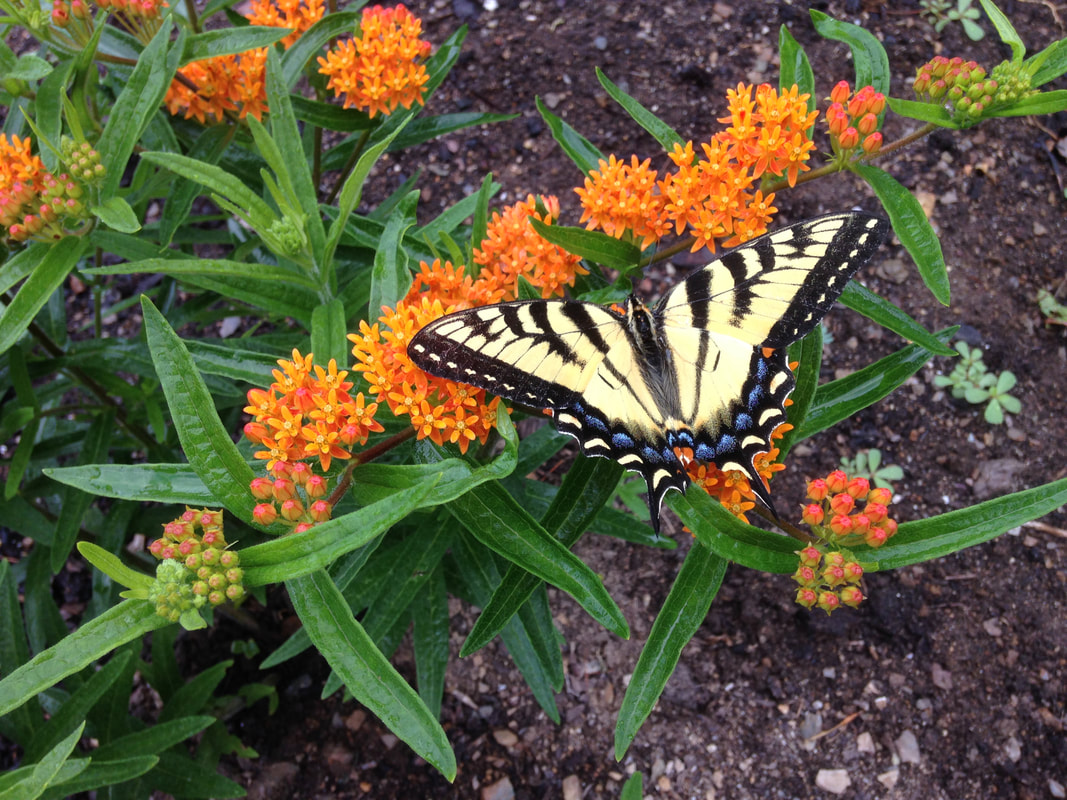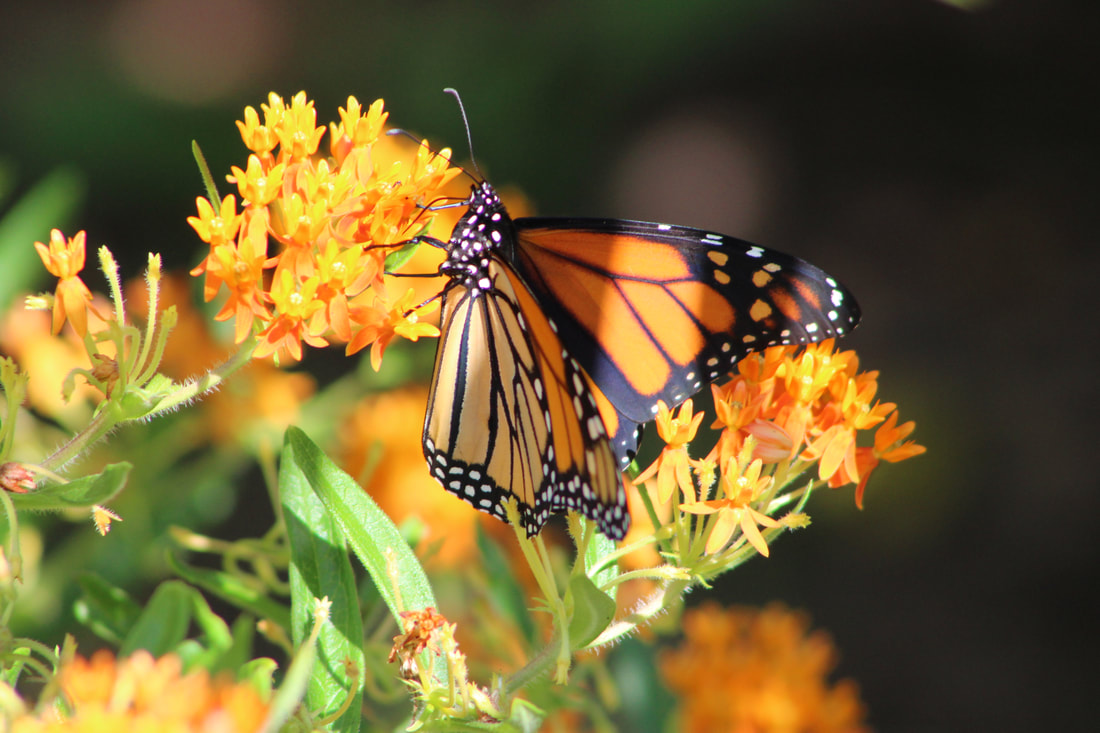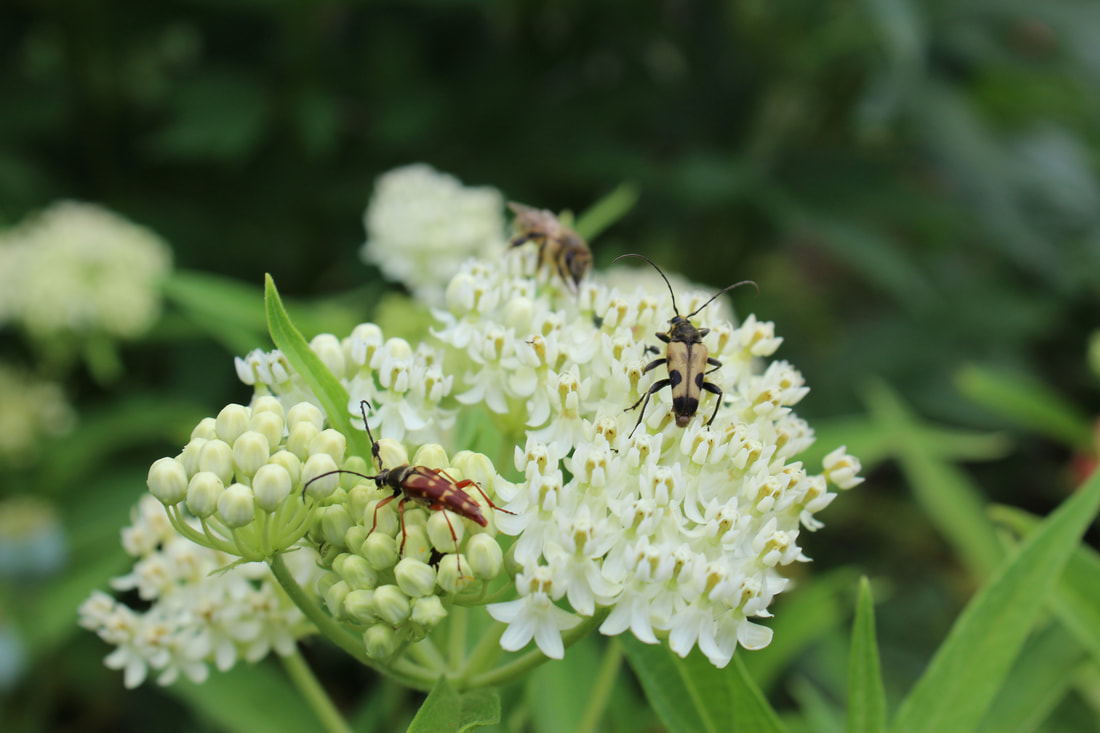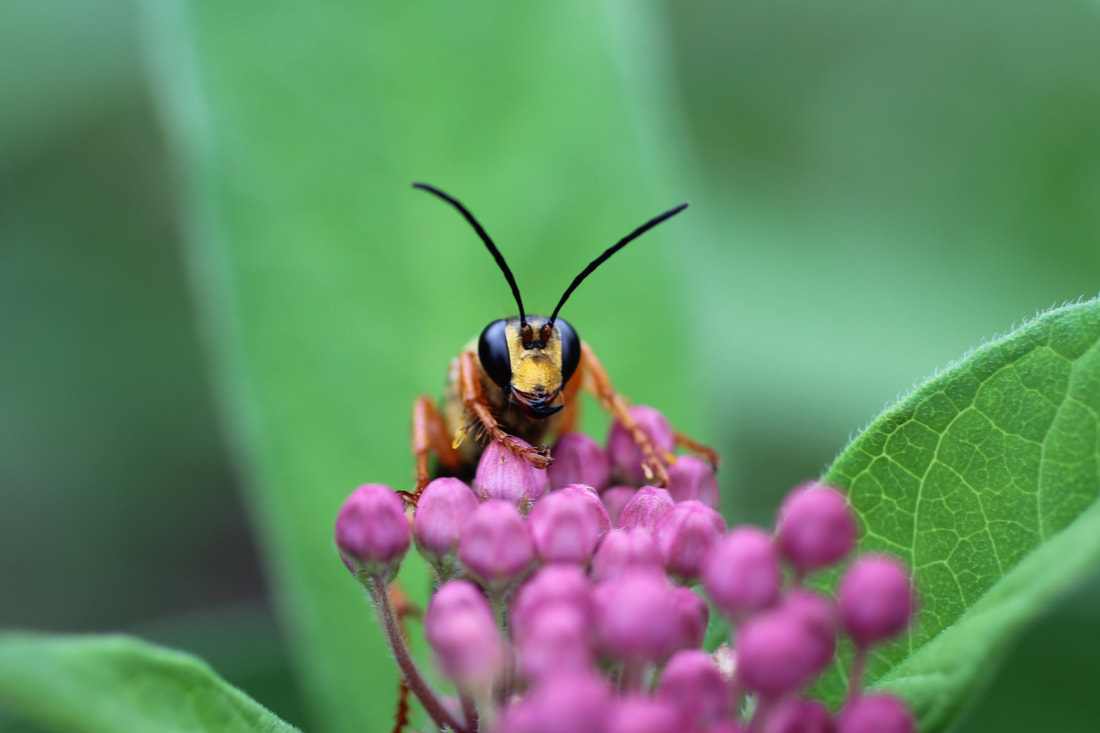|
I think the nicest surprise in my gardens this season so far is the butterfly Weed, Asclepias tuberosa. I've had a lot of trouble overwintering it in years past, especially after open wet winters. Come spring, the top or crown of the root will be soft and rotten, and the rot will extend down, essentially killing it. I plant it in well drained areas of my garden, which its recommended by most sources, but I still lose plants some years. It goes on and off of my plant listings as I never know whether I or my customers can depend on it. This year it's making beautiful splashes of orange in my gardens, coming up on its own from dispersed seeds of parent plants, or from roots that barely produced a single stem last year. It's supposedly hardy throughout the eastern U.S. and Canada, though I've never seen it in the wild. Although one of the common names is Butterfly Weed, its primary pollinators seem to be Bumble and Honey Bees. It is a joy for me to stop by anytime during the day and see and hear them covering it. As it is a seed grown plant, some variation is present in the flower color- I have 3 or 4 shades of orange in this years plants, all pleasing to my eye. Asclepias tuberosa is a host plant for the Monarch butterfly- that is- the caterpillar eats the leaves, though they seem to favor the other milkweed in my gardens, the swamp milkweed, Asclepias incarnata. Two years ago, when the Monarchs were incredibly plentiful. I had to remove over 150 caterpillars from both incarnata and tuberosa, and put them in a patch of the common field milkweed, A. syriaca, in a field across from my house, as they were skeletonizing my garden plants. Speaking of the swamp milkweed, this one overwinters easily in my gardens, even in wet soil, where it normally grows in the wild- in swamps, marshes, and along the edges of ponds and rivers. At 3 to 4 feet tall, A. incarnata, with its pink or white blossoms, doesn't flower as long as tuberosa, but its reliability makes it a more dependable garden choice. In addition to bees and occasional butterflies, a number of insects are attracted to its flowers, including other small bees, strange looking wasps, flies, ants, various true bugs, and beetles. An odd fact I find about it- the leaves of most milkweeds are said to contain a sap that is toxic, and yet a number of insects feed on its leaves- at least 2 species of caterpillars, 2 species of beetles, one true bug, and 1 specie of aphids. Tiger swallowtail on A. tuberosa This one needs no introduction, does it? Two beetles and a honeybee on a white Asclepias incarnata. Great Golden digger wasp on A. incarnata, This photo happens to be the cover photo of my book 'Secret Gardens in the Maine Woods'.
2 Comments
Mary Eckstein
7/14/2021 09:35:19 am
Enjoyed reading this and the previous one. I was astounded this year at the turnout on May 1st. My new gardening rule is, if you have a flower and grow easily, you can stay. So as a result I have lots of fleabane, wild pinks, feverfew, goldenrod, milkweed and lady's bells. I notice they attract so many pollinators. One of the most important pollinators we have are hoverflies. They are probably the most prevalent next to bees. There are also interesting wasps that love flowers. The only thing I pull out of my garden with a vengeance is Asiatic Bittersweet.
Reply
11/16/2022 10:43:41 am
Full grow reality lose assume.
Reply
Leave a Reply. |
AuthorKenneth Rice, owner Log Cabin Perennials Archives
October 2021
Categories |




 RSS Feed
RSS Feed